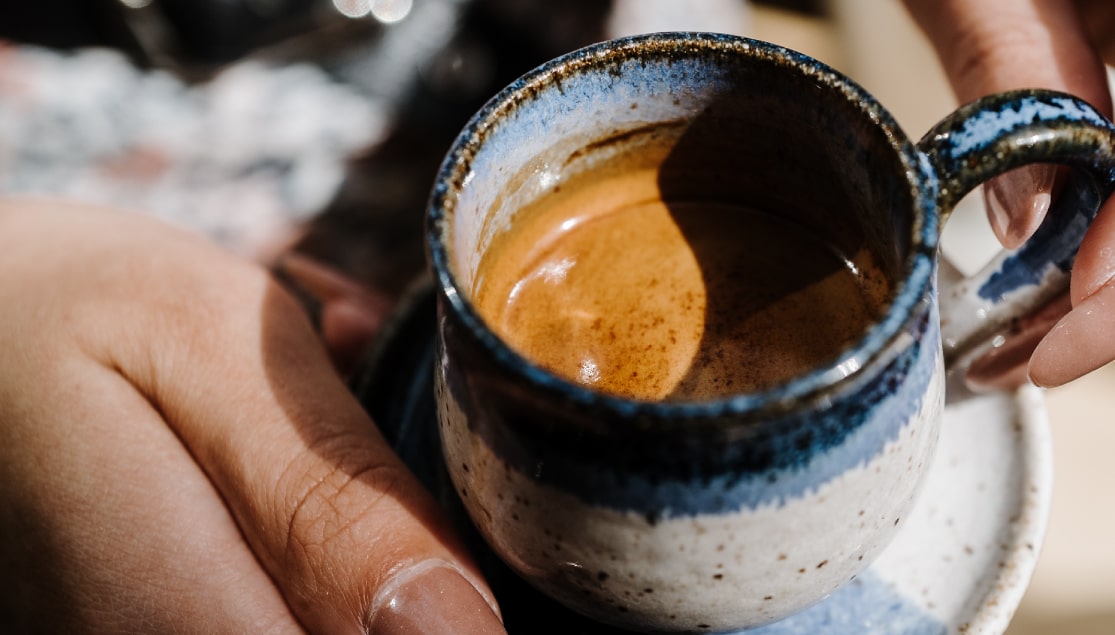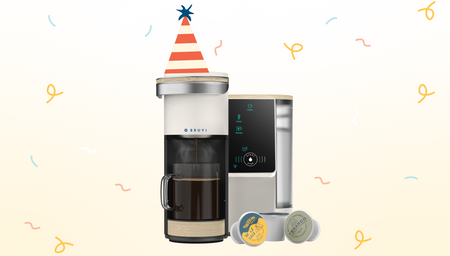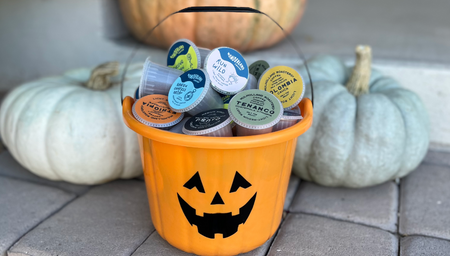Enjoy Delicious Espresso With Your Bruvi® Coffee Brewer!
I’ll come out and say it, I’m addicted to espresso. This small yet strong coffee has stolen my heart with its unique characteristics and versatility. Let’s take a look at this coffee drink and how it has evolved into the worldwide phenomenon that it is today.
What is Espresso?
Espresso is a specific brew method that started in Italy in the early 1900s and has since played a pivotal role in the rise and sophistication of U.S. coffee consumption over the past few decades. Espresso is also a basic component of some of the most beloved coffee drinks, including lattes, cappuccinos, americanos, cortados and many more. While most generally agree on its fundamental characteristics, there are plenty of variables in espresso that have allowed baristas to experiment and push the limits of this brewing method.
At its core, espresso is a small, concentrated coffee drink. While there is not a true consensus on exactly how small espresso is, traditionally, a single espresso is around 1oz. and a double is twice that, about 2oz. Even though the output for espresso is small, it requires the same amount of coffee as a much larger hot coffee. For example, a double espresso, the most common size consumed in the U.S., uses roughly the same amount of coffee as needed to brew a 10-12oz. brewed coffee. For this reason, this brew method delivers a highly concentrated drink that is often admired for its strength and mouthfeel when enjoyed in its purest form.
Espresso: How is it Made?
The process of perfecting espresso requires attention to detail at every step of the process. Here are the 4 focus areas for delivering a beautiful shot.
- Coffee
Most traditionally, espresso is made using a medium to dark roast profiles. These roasts deliver flavors that many expect in espresso and provide greater consistency across shots. Blends are commonly used for espresso to deliver balanced flavors from various regions while still having the ability to cut through milk for some of those fancier espresso drinks. With that said, any coffee bean can be used for espresso. There has been a growing popularity in the use of light roasts in the specialty coffee world, including many single origins that when brewed perfectly, offer a nice, bright treat for your taste buds.
- Grind
The grind size is a critical factor for perfecting espresso. Since the brew time is shortened and you still want to properly extract the coffee to avoid those sour or bitter notes, you have to get this right. The grind size will be extremely small and resemble fine beach sand or powdered sugar. If your shot pulls slowly or tastes bitter, make the grind coarser. If your shot pulls quickly or tastes sour, make the grind finer.
- Brew
This is an area that hosts a variety of differing opinions, so I’ll give you some general guidance. In a traditional coffee shop, the espresso is ground directly into the portafilter and then tamped (compressed) before getting placed into the espresso machine. At that point, the barista turns on the espresso machine where the puck of finely ground and compressed coffee is hit with 9 bars of water pressure. The water makes its way through the coffee and flows slowly through the grinds and out the spout into a cup below. Most commonly, a standard double shot should take between 20-40 seconds to deliver about 2 oz. of espresso.
- Drink
Now that you’re hooked on espresso, you should know that it takes a few different forms, each with their specific draw and fan club. While each of the below uses roughly the same amount of coffee and time, the espresso output is what makes the difference.
- Ristretto - a shorter, more concentrated version of espresso. Ristrettos have a heavier body and play well for darker roasts where clarity of flavors might not be a top priority. A double ristretto will be around 1-1.5 oz and does well paired with milk.
- Normale – This type of espresso shot is the most common in American coffee shops. The higher yield than the ristretto allows for more clarity and higher extraction percentage. This is your standard 2 oz double espresso.
- Lungo – As more high altitude, light roast coffees make their way to the espresso bar, some are opting to pull longer shots, or lungo, to highlight these coffees. The higher brew ratio increases clarity (the ability to pick out flavors) but minimizes viscosity and mouthfeel. A double lungo yields around 3 oz or even higher in certain cases.

If this sounds a bit complicated, no worries, with Bruvi you can enjoy delicious espresso at the touch of a button with the Bruvi coffee brewer! With up to 40% more coffee in our pods than the other guys, you are able to appreciate a true double espresso from a single pod. Feeling fancy? Make an Americano or even an iced latte with ease. The world of coffee is now at your fingertips. Hooray!





